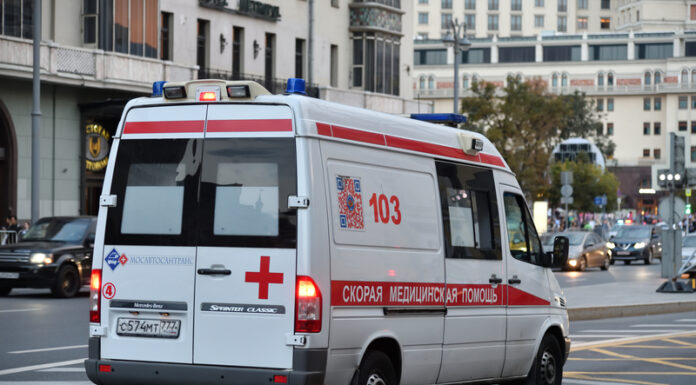Authorities in Russia’s Leningrad region reported that at least 25 people died after consuming vodka contaminated with methanol in September 2025.
The fatalities occurred in Slantsy and nearby villages close to the Estonian border over the course of the month. Initial deaths were reported on September 10 in the Volosovsky district. Tests conducted by Russia’s Investigative Committee revealed that the victims had high or lethal levels of methanol in their bodies.
The series of poisonings began on September 24 when a 54-year-old man from Gostitsy died two hours after being hospitalized. Later that evening, a 69-year-old resident also passed away. In the following days, more bodies were discovered, including a 42-year-old man and a 58-year-old woman found in a house in Gostitsy. On September 25, another couple, both aged 46, were found deceased in the same village.
Among the confirmed victims were Nadezhda B., 63, Yuri F., 39, Yuri K., 65, Alla L., 53, and Zemfira F., 55. According to Telegram channel Topor, victim Yuri Spiridonov, 54, reportedly told his wife he was dying after consuming alcohol. A few hours later, he died.
Olga Stepanova, 60, a nursery school teacher, and Nikolai Boytsov, 78, were arrested in connection with the deaths. Stepanova is accused of buying alcohol without a license and selling it to Boytsov, leading to multiple fatalities. Authorities allege Boytsov poisoned his own wife, who is among the deceased. A search of Boytsov’s apartment uncovered empty bottles and containers smelling of alcohol.
Residents noted that many locals regularly purchased alcohol from Boytsov. Although large-scale poisoning had not occurred before, deaths from moonshine were a yearly occurrence in Slantsy. Boytsov often sold alcohol on credit or at reduced prices when villagers were in need.
Eight additional suspects have been apprehended for producing and distributing the tainted alcohol. The Slantsevsky City Court of the Leningrad Region jailed one suspect for 30 days. In total, 14 individuals were detained across three separate criminal cases. Authorities seized more than 1,000 liters (approximately 264 gallons) of contaminated vodka during the investigation, and officials fear more bottles may still be in circulation.
Interior Ministry spokeswoman Major General Irina Volk confirmed that investigators traced the counterfeit vodka to a commercial firm in Trubnikov Bor, Tosnensky district. According to experts, the fatalities were attributed to the “deadly content of methanol alcohol” in the blood, Volk stated.
The victims were predominantly pensioners who purchased cheap, unlabeled spirits for about 90 pence, or approximately $1, per bottle. The deaths were centered in economically struggling towns near the Estonian border, where moonshine consumption is prevalent. The homemade vodka had about 45% alcohol by volume, or 90 proof.
Methanol, also known as methyl alcohol, is commonly found in products such as windshield wiper fluid and antifreeze. It is colorless and odorless, making it a common, inexpensive substitute in homemade alcohol. According to Mount Sinai Hospital, as little as two tablespoons can be fatal to a child, while two to eight ounces can be lethal for an adult.
Consumption of methanol can lead to visual impairment, with as little as 4 milliliters causing permanent blindness. Symptoms can appear 30 to 120 minutes after ingestion, resembling mild alcohol intoxication with drowsiness and confusion. Six to 30 hours after consumption, symptoms can escalate to dizziness, vomiting, severe abdominal pain, and diarrhea.
Russian President Vladimir Putin’s spokesperson, Dmitry Peskov, called the incident an “extraordinary accident, a tragedy” with numerous casualties. He noted that law enforcement agencies are investigating the case.
The prosecutor’s office has advised residents to avoid purchasing alcohol of unknown origin and confirmed that ongoing inspections are being conducted of local shops and warehouses. Health authorities recommended that anyone who suspects they have consumed methanol seek immediate medical attention. The Leningrad region administration noted that 19 deaths related to alcohol consumption were reported in the Slantsy District in September, with eight cases confirmed as methanol poisoning. One person remains hospitalized in critical condition.
Mass fatalities from consuming inexpensive homemade alcohol substitutes are not uncommon in Russia. Earlier in the week, prosecutors sentenced two individuals to nearly a decade in prison for manufacturing and selling a counterfeit cider that killed 50 people in 2023. In August 2025, at least 10 tourists died in Sochi after consuming counterfeit chacha (and wine) bought at a market.
In 2016, more than 60 people died in Irkutsk, Siberia, after drinking contraband bath oil containing methanol. Following that incident, Russia “toughened legislation” to combat such cases, but inexpensive homemade spirits using alcohol substitutes remain accessible, especially in rural areas with lower living standards and where legal vodka prices are prohibitive. Russia has faced repeated instances of deadly surrogate alcohol poisonings, often involving methanol-laced or industrial-grade spirits. These incidents are usually due to “poverty, limited access to legal alcohol,” and underground suppliers in rural areas.
Update: As of October 3, the number of dead had increased to 41.








